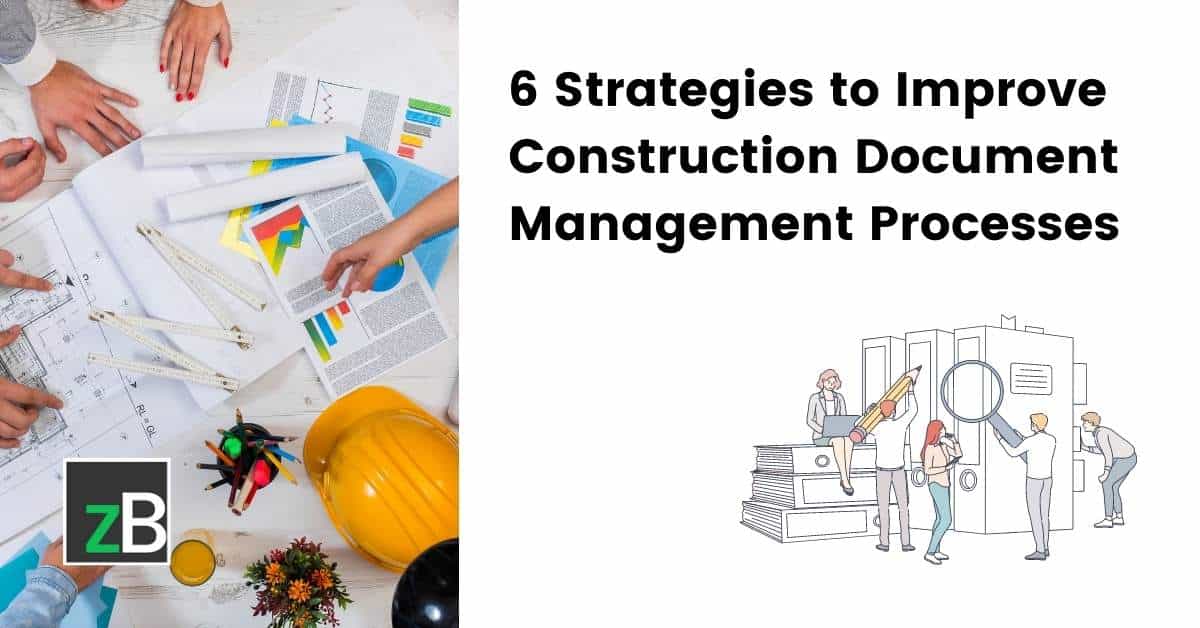Structure Better Projects: The Role of Construction Document Management in Success
Structure Better Projects: The Role of Construction Document Management in Success
Blog Article
Enhancing Process Effectiveness: Engineer's Specialist Methods for Building Record Management
In the realm of architectural style and construction, the thorough management of files stands as a cornerstone for job success. Designers utilize numerous strategies to enhance workflow effectiveness and simplify construction record monitoring procedures. From adept company techniques to the combination of collective platforms and the execution of secure information monitoring services, engineers navigate an intricate landscape of methods and devices. Nevertheless, among this intricacy, a select few expert strategies have become crucial in enhancing process effectiveness. These strategies not just guarantee smooth project progression but additionally hold the key to unlocking boosted productivity and accuracy in the detailed world of building and construction record monitoring.
Secret Paper Company Methods
When taking care of building and construction papers, among the crucial strategies that engineers employ is developing a methodical and reliable company system. This system generally involves categorizing records based upon their type, such as drawings, requirements, agreements, and permits. By producing distinctive and clear categories, engineers can swiftly situate specific information when required, conserving time and reducing errors in the construction process.
Within each classification, engineers even more organize papers by making use of or producing subfolders numbering systems to denote versions or alterations (construction document management). This ordered structure ensures that one of the most appropriate and current info is conveniently obtainable while preserving a record of adjustments made throughout the project timeline
In addition, designers typically make use of digital document administration platforms that provide features like keyword search features, variation control, and access constraints to enhance organization and collaboration amongst job stakeholders. These tools simplify the document access procedure, advertise real-time updates, and facilitate smooth communication, ultimately contributing to the general success of the construction project.
Collaborative System Assimilation
To enhance paper administration efficiency in building and construction projects, architects seamlessly incorporate collaborative platforms to enhance interaction and enhance sychronisation among task stakeholders. By leveraging joint platforms such as project administration software application, cloud-based storage systems, and communication tools, architects can produce a centralized hub for all project-related records and interaction networks. These systems allow team participants to gain access to, review, and collaborate on documents in real-time, decreasing hold-ups and the danger of mistakes connected with typical paper administration techniques.
Joint system assimilation additionally fosters openness and liability within the job team, as all stakeholders have exposure into the newest job updates and alterations. By systematizing interaction and record sharing, designers can make certain that all group participants are working from one of the most updated information, minimizing the opportunities of conflicts or misunderstandings developing due to obsolete records.
In addition, joint platforms allow seamless cooperation in between engineers, professionals, customers, and various other task stakeholders, advertising an extra effective and natural project process. By damaging down interaction barriers and promoting details exchange, engineers can drive productivity and development in construction jobs, inevitably causing successful job end results.
Variation Control Ideal Practices
Carrying out effective version control techniques is important for preserving paper precision and uniformity in construction jobs. By developing a clear system for handling modifications, task groups Extra resources can make sure that everyone is working from one of the most updated paperwork, decreasing the risk of errors and inconsistencies throughout the building stage.
One of the key ideal practices for version control is to appoint distinct identifiers per file variation. This can be achieved by utilizing a numbering system or day stamp that plainly indicates the order of revisions. By plainly classifying each model, staff member can conveniently track the progression of the document and determine one of the most recent version.

Automation Tools for Performance

Paper control software application, like Procore or PlanGrid, centralizes job documentation, making it easily available to all stakeholders. These systems permit real-time cooperation, variation control, and automated backups, guarding against data loss. Additionally, Building Details Modeling (BIM) software application automates the generation of building and construction drawings and guarantees that modifications are integrated across all related documents.
Incorporating automation devices with cloud storage space solutions better boosts ease of access and safety and security. By automating the record administration procedure, job groups can concentrate their time and effort on value-adding activities, ultimately enhancing efficiency and project results.
Secure Data Administration Solutions
Effectively taking care of and safeguarding project information is extremely important in the construction industry to ensure discretion and integrity throughout the task lifecycle. Secure data monitoring remedies play an essential function in shielding delicate details from unapproved have a peek here access or violations. Architectural firms can use encrypted cloud storage space solutions to safely share and keep job files with authorized personnel. Executing gain access to controls, such as user verification and authorization setups, ensures that only licensed individuals can check out or modify sensitive data.
In addition, utilizing digital civil liberties management (DRM) tools adds an added layer of safety and security by preventing the unapproved distribution or replication of project files. Routine information back-ups are crucial to alleviate the danger of data loss as a result of unforeseen circumstances like hardware failings or cyber-attacks. Collaborative platforms with built-in safety attributes enable seamless communication and data sharing amongst job staff member while preserving data stability.
Final Thought
To conclude, applying key document organization methods, integrating collective systems, practicing version control ideal practices, using automation devices, and adopting protected information administration remedies are necessary methods for boosting workflow performance in building and construction paper monitoring. These experienced methods can streamline procedures, enhance communication, make sure precision, and preserve information safety throughout the building task lifecycle.
In the realm of building layout and building, the meticulous administration of records stands as a foundation for job success. These strategies not just ensure smooth task progression but likewise hold the key to unlocking boosted performance and accuracy in the elaborate realm of construction record management.
To optimize document monitoring effectiveness in building projects, engineers perfectly integrate joint systems to enhance communication and enhance sychronisation among project stakeholders. These platforms permit team members to access, testimonial, and collaborate on records in real-time, lowering delays and the danger of mistakes associated with typical record administration approaches.
Using automation tools in building paper management considerably enhances effectiveness and streamlines processes for task teams. construction document management.
Report this page